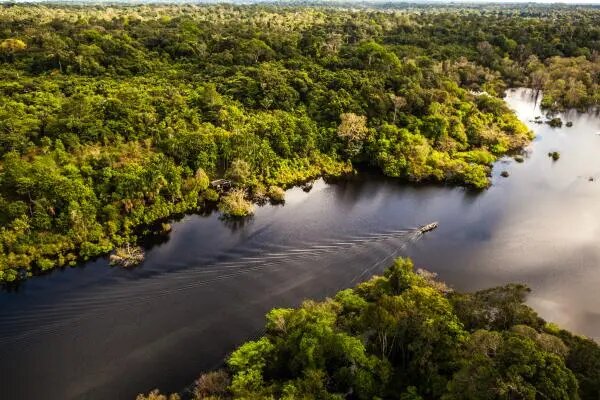

For sure, to know Amazonia is an unique experience. The Amazon rainforest is the world’s richest and most-varied biological reservoir, containing several million species of insects, plants, birds, and other forms of life, many still unrecorded by science.
The luxuriante vegetation encompasses a wide variety of trees, including many species of palm, and acacia, as well as rosewood, kapok (gigantic tree of Amazon jungle), Brazil nut, and rubber tree. Major wildlife includes jaguar, manatee, capybara and many other types of rodents, and several types of monkeys.
Another great reason to visit the Brazilian Amazon, of course, are the tours to indigenous communities. Although the more remote indigenous villages are not open to visitors, there are some indigenous tribes close to Manaus that offer and authorize these tours. In addition to contributing to the positive social impact, the traveler has the chance to experience the Amazonia in a way that is more connected to the local reality.
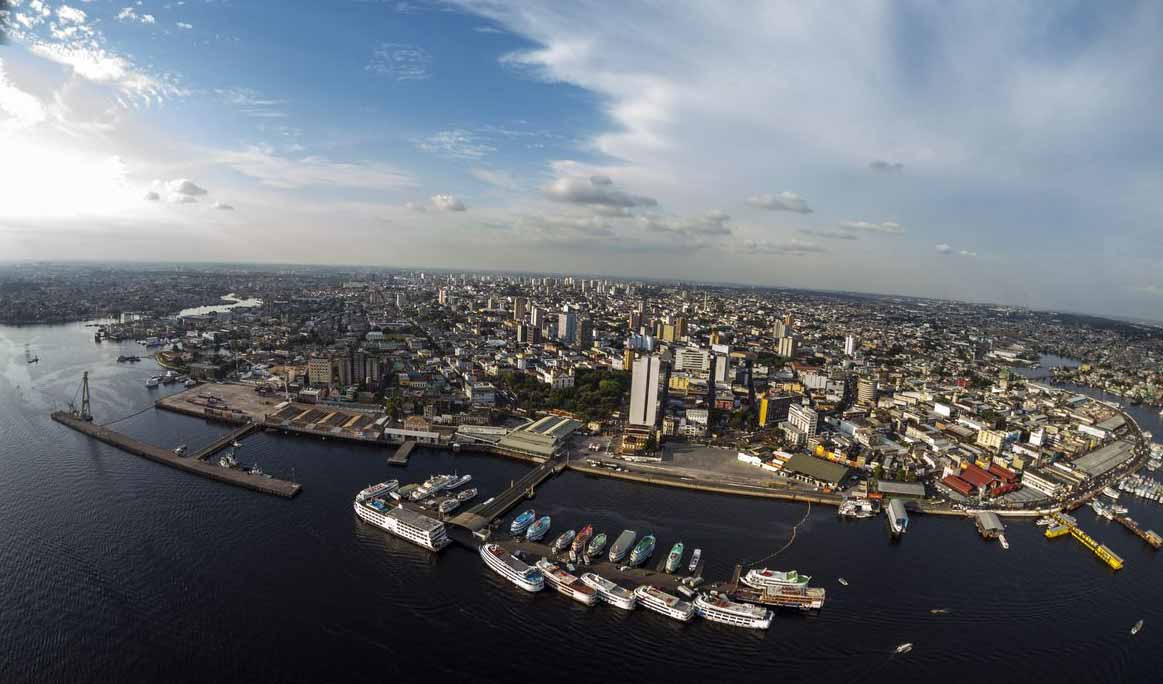
The largest city in the Brazilian Amazon and the country’s main gateway, Manaus has a population of more than 2 million. It is also only accessible by riverboat or plane.
Also, Manaus is the center of ethno-tourism in Brazil. The city is also home to the largest urban indigenous population in the country. There are about 30,000 indigenous people from 47 peoples who speak 16 languages and articulate in 100 organizations, according to Marcivania Sateré, coordinator of the Coordination of Indigenous Peoples of Manaus and Surroundings (Comipe).
There are around 400 indigenous tribes in Brazil’s Amazon basin, each with its own dialect, culture and territory.
The largest tribes in the Amazon rainforest are the Yanomami and Xingu. These ethnic groups live isolated in an area of approximately 96,650Km2 and 26,420Km2, and have a population of 35,000 and 7,000 indigenous people, respectively.
Most of the Amazon tribes that live by the rivers are in contact with the rest of the world. They use the fertile soil for agriculture, growing fruits, and vegetables such as corn and beans. Being very skilled hunters, they also use handmade bows and arrows to catch animals and fish for food.
The Dessana Tukana tribe, for example, is one of those more civilized, but the older generation people still preserve their customs and culture, leaving the experience very rich and without anything to be desired.
Being Manaus such a great visitor hub, there are plenty of tour operators offering day trips and multi-day river cruises into the Amazon. In this case, the tourist has a chance to spend more time and follow the daily life of this population.
These packages range according to the budget of visitors. So, there is sure to be one to suit your needs. As well the tours are set up jointly with the residents of these ethnic groups, according to their needs, and taking environmental preservation very seriously.
It is also, depending on the tour and budget chosen by the visitor, it is possible to take a picture with a snake, monkey, birds, alligator, to harvest açaí, grind the coffee itself, roast the flour and to prepare for the tapioca biju and plant rubber tree seedlings, a symbol tree of the Amazon region. In the indigenous tribes, the difference is to experience millenary habits and traditions.
Regardless of weather conditions, tours take place normally.
Schedules may change due to weather, access, or other factors that the agency judge can interfere with the safety or well-being of passengers.
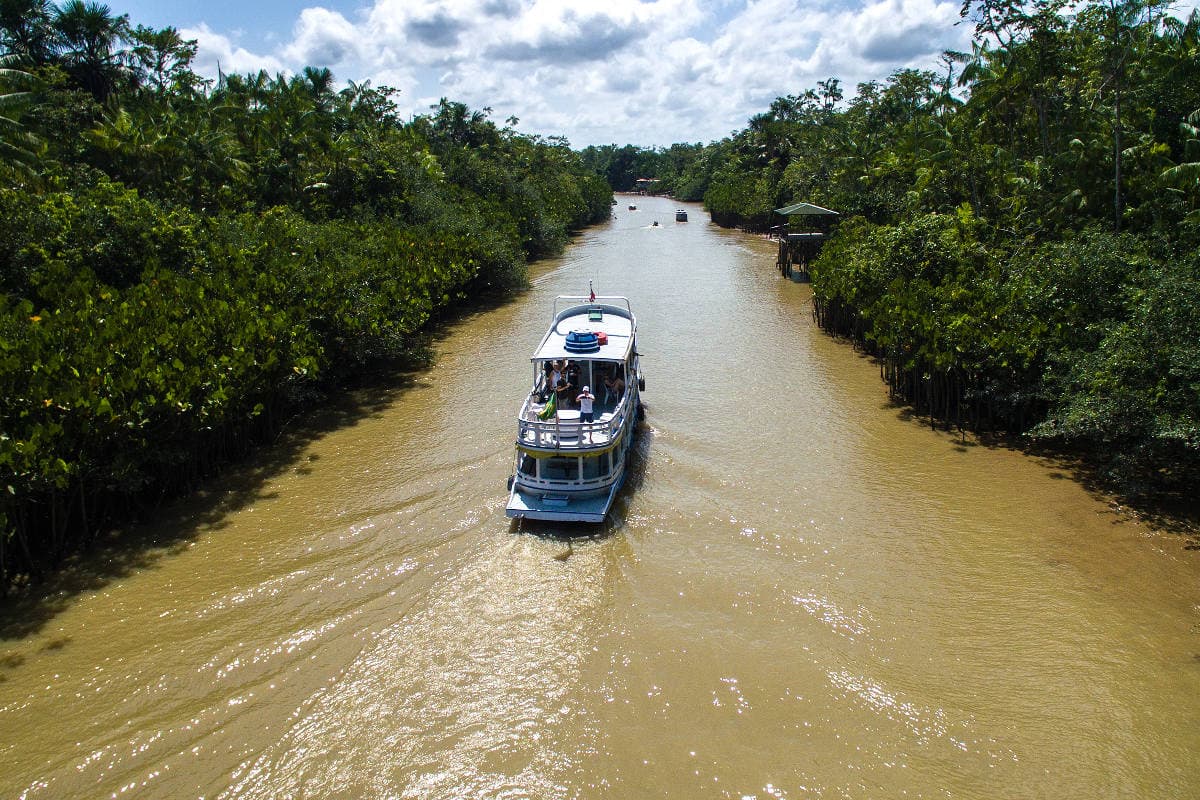
Day tours to visit local communities take place every day of the year. However, there are some differences in the landscape between the times of floods and ebbs of the rivers. There are also the rainiest months, which can get in the way a little, but do not prevent the tour, since the hot weather in Amazon is the whole year.
There are basically two seasons in Manaus: the rainy season with high humidity (from December to April), and the dry season and very hot (from July to September).
Therefore, the best time to go is really year round.
The adventure usually gets started at 7:30 am with the transfer picking up visitors from their hotels or meeting points and dropping them off to the Port of Manaus to take the speedboats of most local tourism agencies that offer this type of tour. The tours follow the schedule according to each agency.
The Amazon Safari, as it is known by locals, is a one-day tour from Manaus by boat to the main attractions of the Rio Negro river. The tour lasts on average 7 hours and costs around USD 50 per person.
7:30am – Shuttle started
9:00am – Speedboat departure Manaus Port and the tour begin
9:40am – Swimming and interaction with pink dolphins in their natural habitat (optional)
10:30am – Meeting of the Waters
11:00am – Visit floating handcraft fair | Pirarucu fishing (optional) | Janauari Ecological Park
12:00pm – Lunchtime | Floating Handicraft visit | Jungle trill to see monkeys, kapok tree and vegetation
1:40pm – Visiting native Indigenous Villages
3:00pm – End tour and back to Manaus Port
P.S.: Swimming with pink dolphins and Pirarucu fishing has an extra fee to be paid if the visitor has not paid the full package.
Tip:
Be sure to bring items such as repellent, sunscreen, raincoat, bathing suit and an appropriate bag to store objects during the boat trips. If you go hiking, wear long pants, socks and appropriate sneakers. Make sure your yellow fever vaccine is up to date.
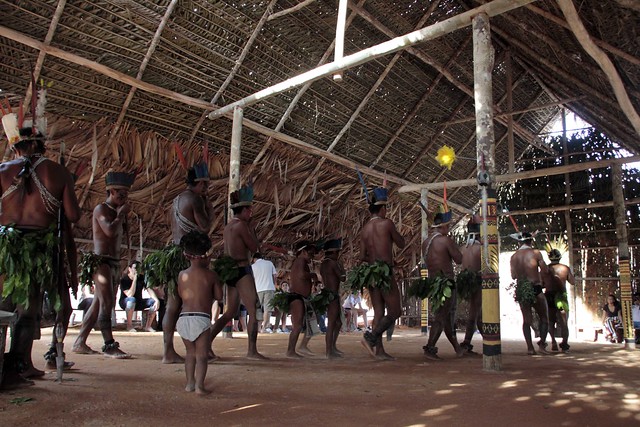
Rituals work to recount a kind of return to this time of general indistinction in which divinities, humans, animals and plants communicate among themselves and produce their existence through this interaction.
The visitors immerse themselves in the customs, culture and way of life of the indigenous tribes, an experience that involves watching rituals with songs, dances, storytelling, body painting, meals with typical foods, forest trails and all community hospitality.
It represents strength, power, the cycle of life, connection with nature or a reward for acts of courage. The symbology changes according to the ethnicity of each tribe and what is perceived is that its beauty has a secondary value. It is usually made of feathers attached to a strip of leather or other material.
From Manaus it is possible to visit only five indigenous communities on a day trip.
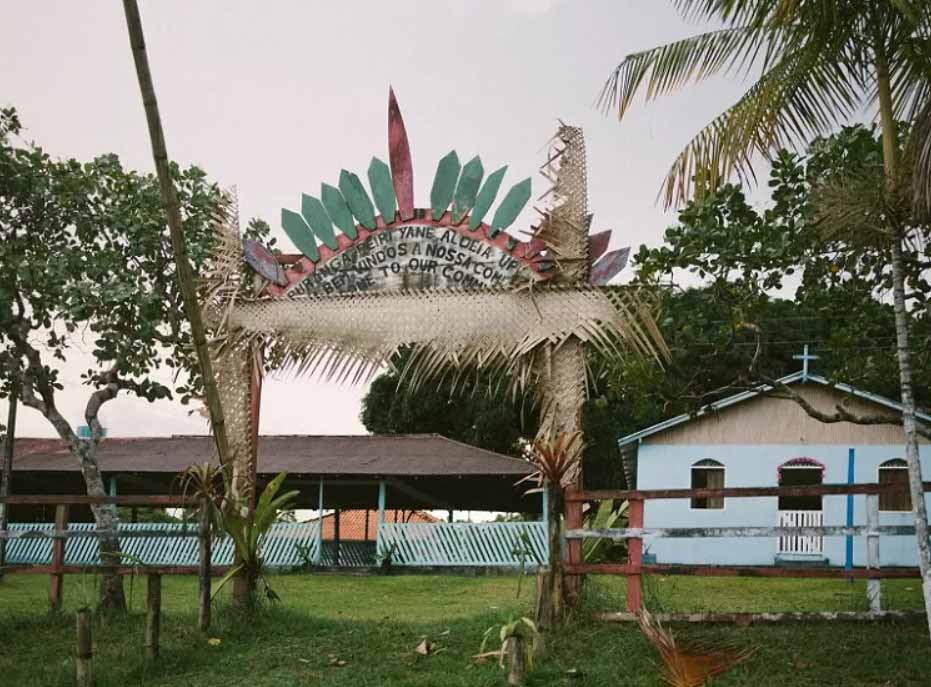
Baré ethnic is located 351km from Manaus, within the Puranga Sustainable Development Reserve (RDS). Currently, about 40 families live in the region, most of them with the same degree of kinship.Their source income is around tourism and handicrafts.
To get there from Manaus the visitor has to navigate the Rio Negro and Cuieiras river around 7 hours. Boats are normally the only means of transport used by the population.
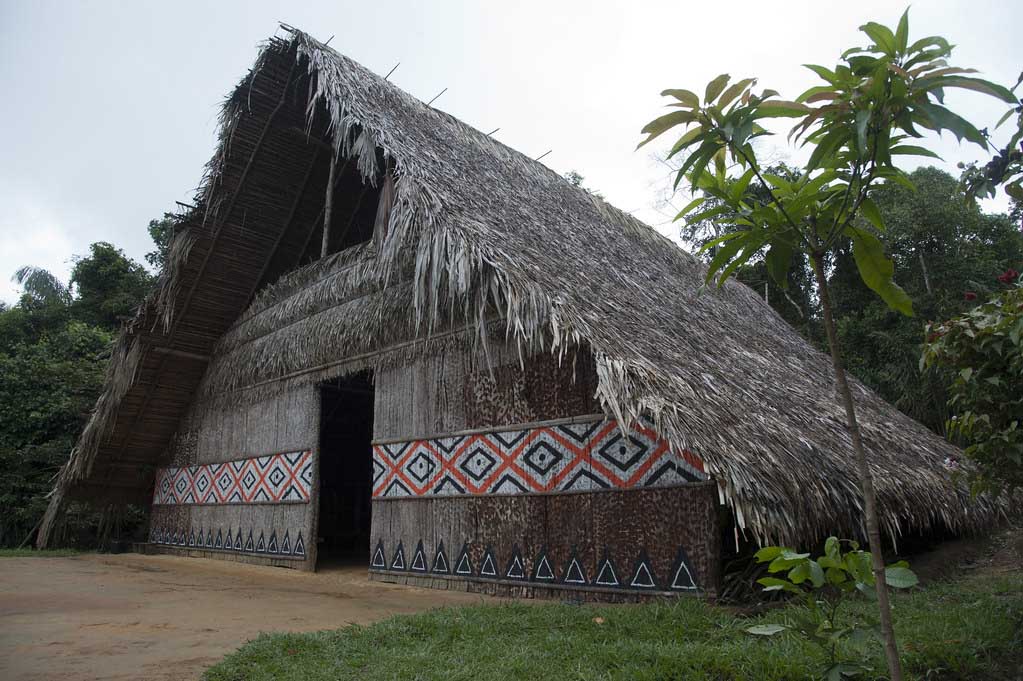
Located on the banks of the Solimões River, the route can only be done by boat. The path into the forest already gives the visitor the opportunity to experience unique moments.
The Dessana ethnic group originates from the village that borders Venezuela, Colombia and Brazil. However, most members of the tribe do not live in the area visited by tourists, but in an area more reserved in the forest.
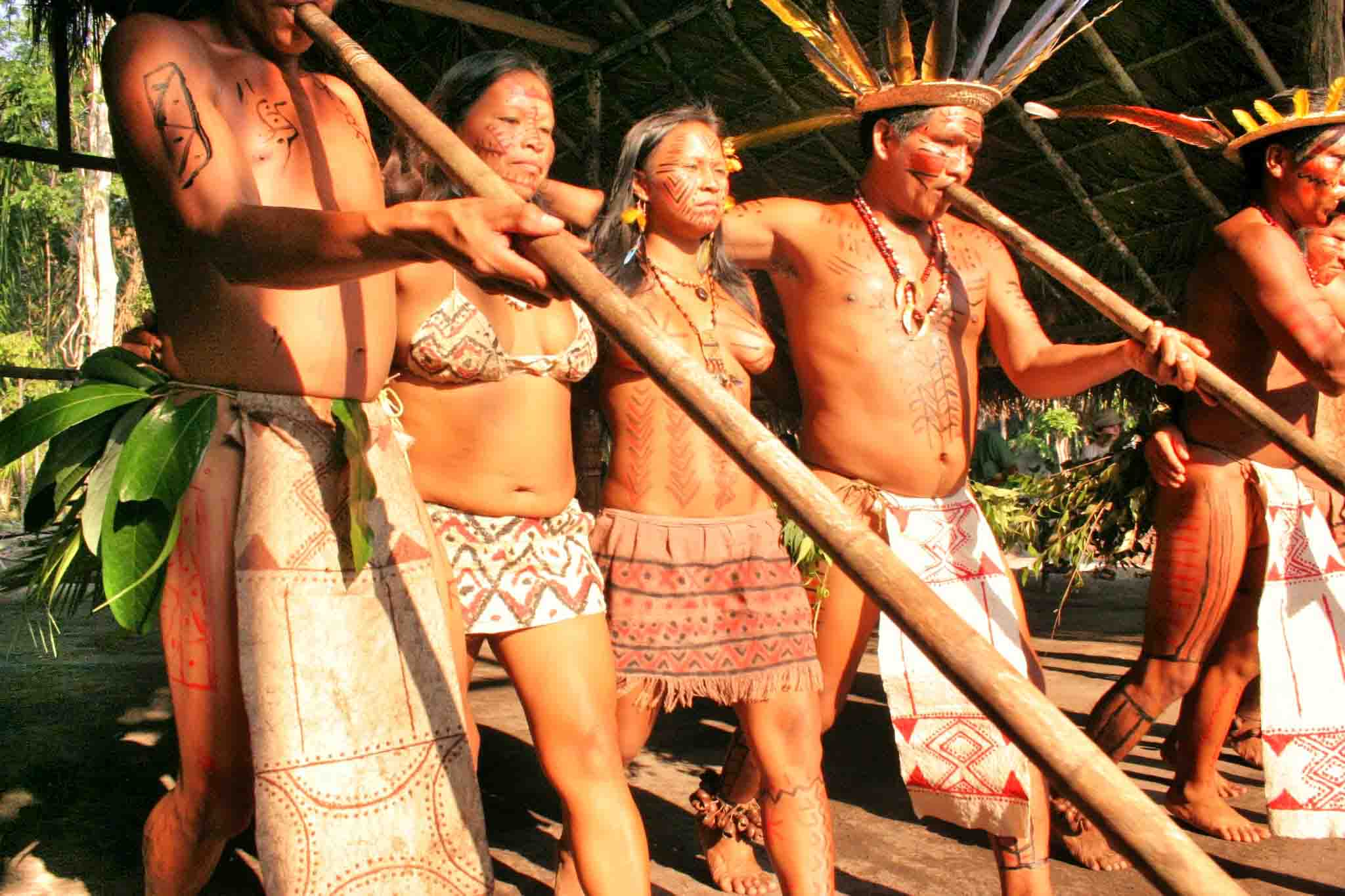
Located in the São João do Tupé community, in the RDS (Sustainable Development Reserve) of Tupé near Manaus. This ethnic group also originates from a village between Venezuela, Colombia and Brazil. The group participates in a marriage system based on linguistic exogamy, with unions between members of different language groups.
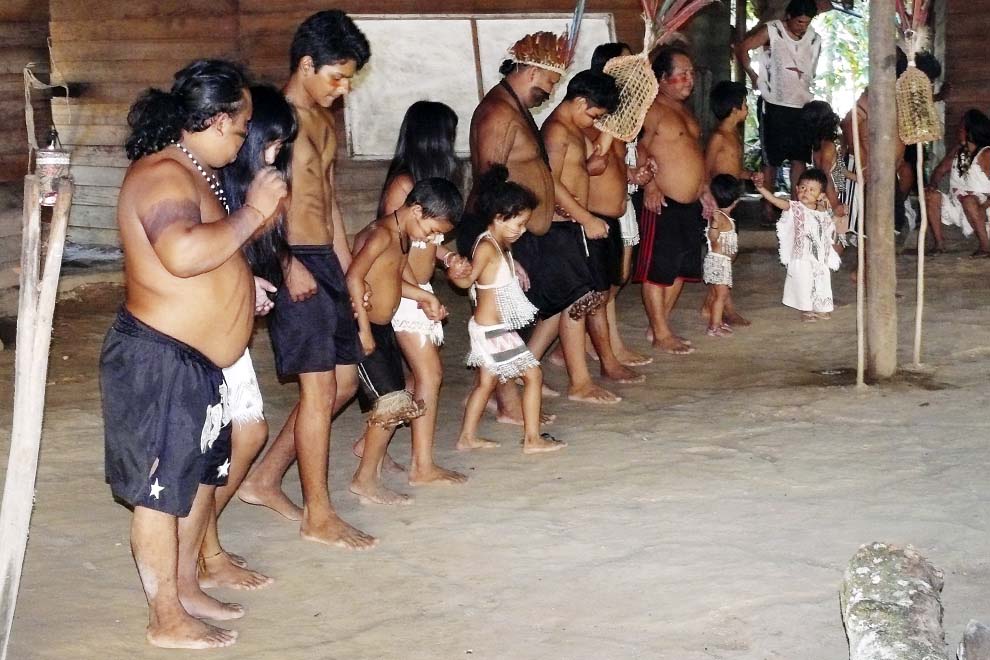
Near 267km to Manaus normally not accessible for visitors. The natives mainly live from the plantation of the Jungle and the Guarana Fruit, from which they make their traditional Sapko (a high energetic) drink.
Due to good contacts with the local authorities and to the indigenous we organize on exceptional basis expeditions to the land of the Guarana and Indians. As Maues is closer to Manaus, these expeditions are also accessible for guided visitors.
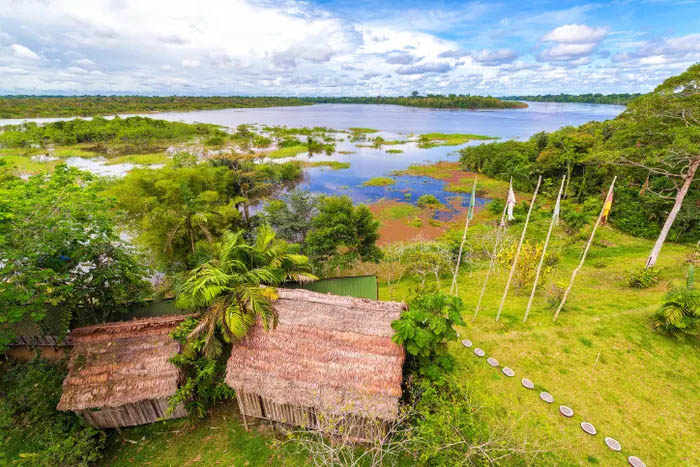
The Amazonian Indians from the Yavarí valley are located between the Brazilian and Peruvian Border. Southwestern Manaus, about 1380 Km distance from the Amazonas capital, sailing 02 days by the yavarí River.
It is possible to find some tribes like Corubos and Marubos, those tribes are more remote but it is not possible to visit their villages or central communities because they are extremely in preservation and are at high risk of any contact with them. Also the access for sailing around their communities is prohibited.
Voyagers travel offers riverboat cruises that visit several communities, national parks, lakes and nature trails, the expedition style cruises offered last anywhere from 3 – 7 nights and are able to reach more remote areas in comfort. Below are some of the riverboat cruises offered:
Untamed Amazon 1 to 5 night cruise routes from Manaus
Tucano Amazon Cruise – 4 and 6 night itineraries
Amazon Clipper cruises 2 to 5 night programs starting in Manaus
Desafio Sailboat cruise on the Amazon 3 nights
To join this cruise and to visit the Tuyuka tribe I got a free ticket from Olimpio Carneiro agency located at Tropical Executive hotel, in Manaus. So, I will tell you guys in detail about my adventure on this tour.
Mr. Olimpio picked me up by 7am at the meeting point. After me, other tourists from Italy, USA and Brazil (from Rio de Janeiro, São Paulo, Brasília, Santa Catarina) joined us until Port of Manaus where we took the speedboat to get started on our adventure to the indigenous community.
When we arrived at the Tuyuka village we were greeted by the chief’s son, who speaks Portuguese and explained to us everything about their customs and traditions. Then, the chief presented himself in native language as part of the ritual to receive visitors.
After all this explanation our group was invited to take a seat at a traditional place (indigenous hollow) roofed thatched while waiting for a traditional dance show to begin. Suddenly, the artists are on their feet, playing maracas and percussion instruments as they sing Amazonian songs.
Dressed in feather headdresses and covered in body paint, the community members display the traditions of their ancestors. Although they currently live within walking distance of a sprawling metropolis with “modern luxuries” such as cell phones and satellite TV, the tribe try to keep their culture alive despite global modernization.
The first ritual is the dance of Jurupari, a supernatural god. In this attraction there is no participation of women and children, because they are not allowed to see the instrument. The younger indigenous people take their huge wooden wind instruments and start making an interesting sound, moving it up and down.
In the meanwhile, they paint the visitors’ faces, the face paint is an additional BRL 5 per person, while the kids hold monkeys, snakes, birds etcetera. Actually, everything at the village has to be paid. Animals pic, for example, costs BRL 10.
The female indigenous join the group on the third part of the show. When the presentation comes to an end, the village chief invites the visitor who wants to participate to join the indigenous group and to dance the ritual, ending the meeting and providing tourists with a unique experience of indigenous culture.
When the ritual session ends the visitors are allowed to interact directly with the indigenous people, buy their handicrafts and to take pictures.
I had an amazing experience and I recommend it to everyone who is thinking of coming to the Amazon rainforest.
Olímpio Carneiro Turismo
Ponta Negra, Manaus – AM
(+5592) 99261-5035
Amazon Explorer
Adrianópolis, Manaus – AM
(+5592)2123-4791
Leave a Comment